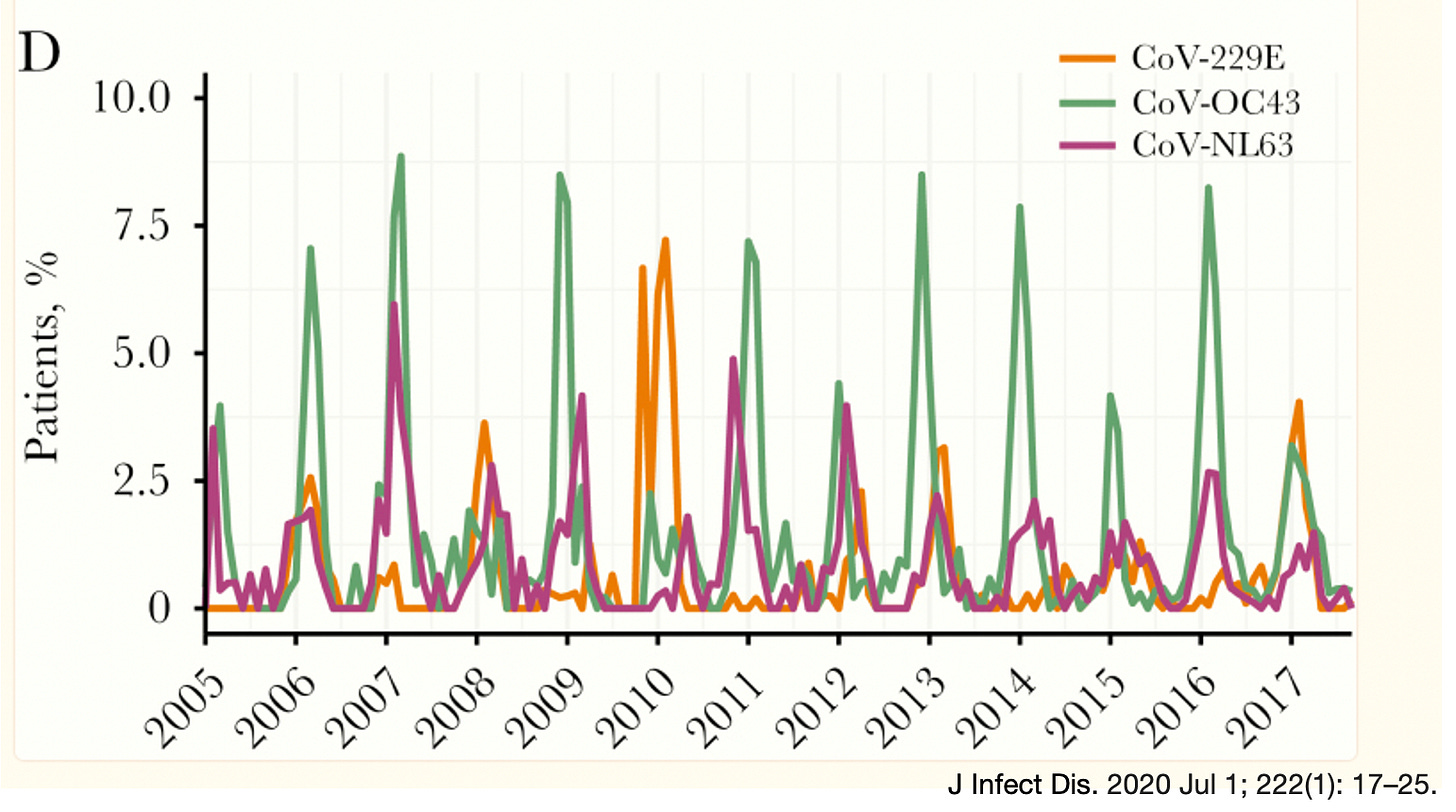Understanding the current circulation of respiratory agents
The latest surveillance report shows some return to normality -
Our readers will remember that the only cited respiratory virus for decades was the ubiquitous influenza, often dubbed the “flu” - a sloppy term used by researchers and media who knew no better or wanted to hide reality.
One of the few positive aspects of the sorry Covid saga has been that the public now understands that there is more than one agent; in fact, there are hundreds of known ones and X number of unknown ones.
Respiratory virus circulation is constant, with high, low, and low-level circulation in between. For example, seasonal coronaviruses generally peak between January and March,
rhinovirus when schools return, and influenza picks up around Christmas, usually preceded by RSV.
Sir Christopher Andrewes, the virologist who discovered human influenza A, lamented that one day there was a high number of people with colds and influenza-like symptoms, and four days later, it all disappeared. There are many theories to explain this well-known phenomenon, but precious few facts, as we…
Keep reading with a 7-day free trial
Subscribe to Trust the Evidence to keep reading this post and get 7 days of free access to the full post archives.





